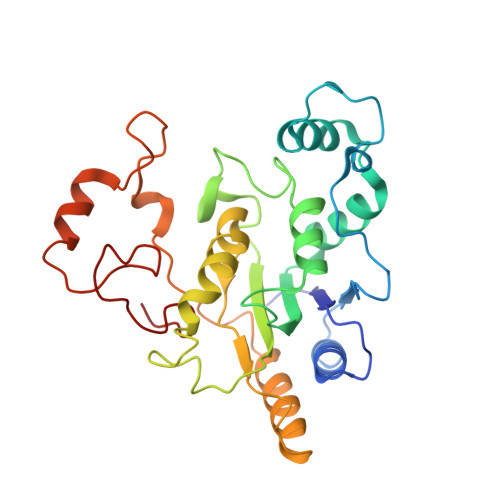Discovery and Mechanistic Elucidation of NQO1-Bioactivatable Small Molecules That Overcome Resistance to Degraders.
Barbosa, B.M.G., Sfyaki, A., Rafael, S., Jose-Duran, F., Pous, J., Sanchez-Zarzalejo, C., Perez-Lopez, C., Vilanova, M., Cigler, M., Gay, M., Vilaseca, M., Winter, G.E., Riera, A., Mayor-Ruiz, C.(2024) Angew Chem Int Ed Engl 63: e202316730-e202316730
- PubMed: 38153885
- DOI: https://doi.org/10.1002/anie.202316730
- Primary Citation of Related Structures:
8PQN - PubMed Abstract:
Degraders hold the promise to efficiently inactivate previously intractable disease-relevant targets. Unlike traditional inhibitors, degraders act substoichiometrically and rely on the hijacked proteolysis machinery, which can also act as an entry point for resistance. To fully harness the potential of targeted protein degradation, it is crucial to comprehend resistance mechanisms and formulate effective strategies to overcome them. We conducted a chemical screening to identify synthetic lethal vulnerabilities of cancer cells that exhibit widespread resistance to degraders. Comparative profiling followed by tailored optimization delivered the small molecule RBS-10, which shows preferential cytotoxicity against cells pan-resistant to degraders. Multiomics deconvolution of the mechanism of action revealed that RBS-10 acts as a prodrug bioactivated by the oxidoreductase enzyme NQO1, which is highly overexpressed in our resistance models. Collectively, our work informs on NQO1 as an actionable vulnerability to overcome resistance to degraders and as a biomarker to selectively exploit bioactivatable prodrugs in cancer.
- Institute for Research in Biomedicine (IRB Barcelona), the, Barcelona Institute of Science and Technology (BIST), 08028, Barcelona, Spain.
Organizational Affiliation:


















